At first glance, Chanderi seems like any over grown small town in India, dusty, crowded and full of noise. The main road, with the usual smattering of hotels, eateries and shops, was a single lane road with little thought or imagination behind it. It wasn’t until we reached the Jama Masjid that the vestiges of the old town began to reveal itself. But we have now been in enough small towns across the country to not be fooled by first glimpses that don’t say much, and move beyond to look under the surface. Chanderi, like many of our other favourite places, Bidar and Bijapur in Karnataka or Junagadh in Gujarat for instance, did not disappoint. With over 300 monuments, camel caravanserais, havelis, palaces, hammams and step wells in various stages of ruin, Chanderi will please any history or architecture buff or even the curious soul.
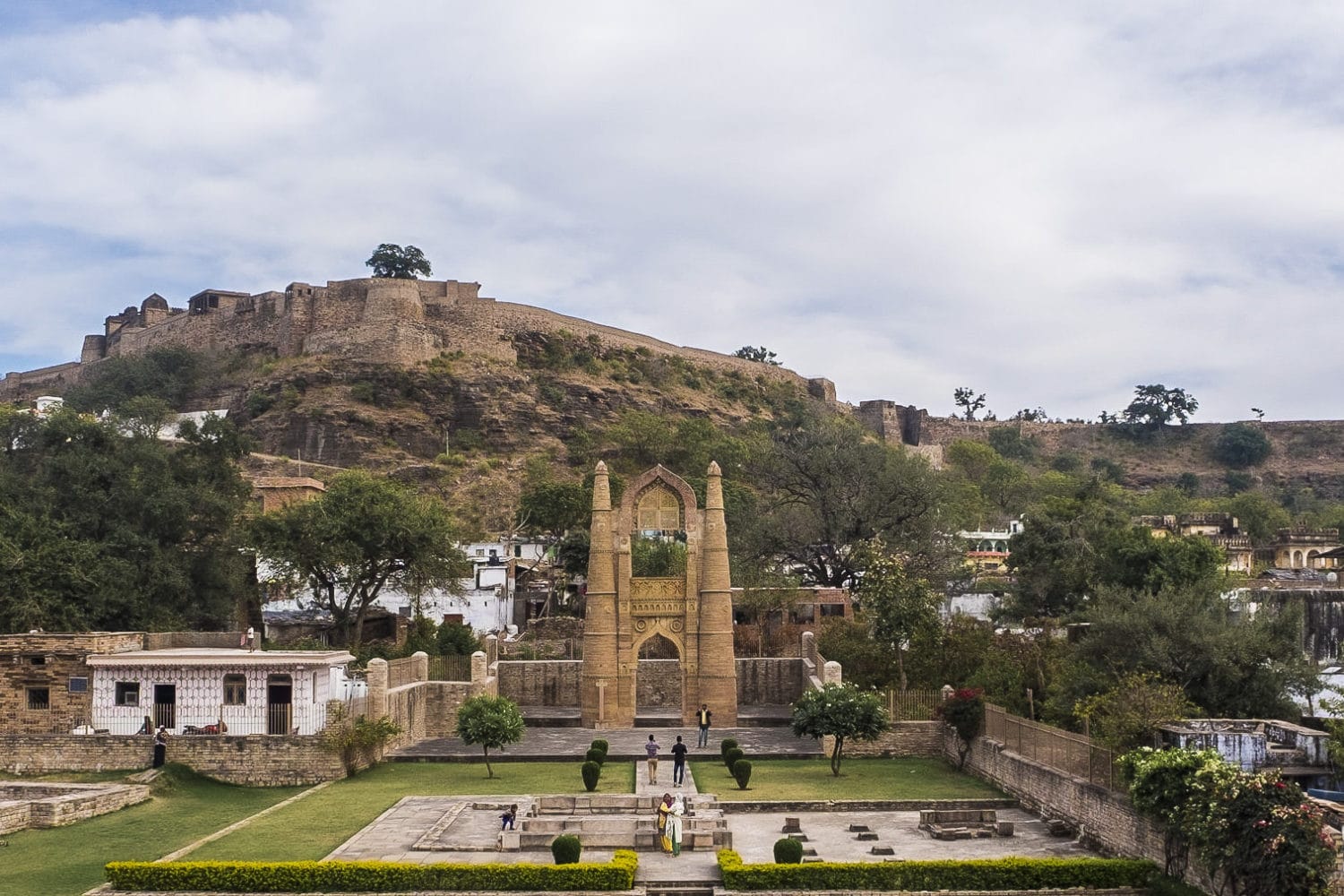
A short distance from the Masjid, is one of the many gates that lead to the old town, which is closed to all vehicular movement, though not the two wheelers. They always seem to squeeze in everywhere. We walked through the gate, standing tall, and into the old town and were instantly transported to a different time. The narrow lanes and alleyways had all the trappings of a bygone era. With ornately carved balconies, old style apothecaries and wooden windows with intricate designs that are fading, the old city appealed to us instantly. We walked through the many narrow lanes, chatting with people and hearing their stories. It was through these same lanes, or perhaps another old bazaar some distance away, that Moroccan traveller Ibn Batutta passed through, later writing about the wonders of Chanderi in his travelogues. Back in the mid 14th Century, he described a city full of bazaars with all sorts of exotic wares and goods, that were being sent to different parts of the world. On the path of major trade routes in Central India, Chanderi was an important trading city, situated at the border between the Malwa and Bundelkhand regions and also due to its proximity to the ports of Gujarat. While 2017 Chanderi has lost much of its importance, it still clings to its former glory, and there is an air of nostalgia that has merged with the crumbling houses in the old city.
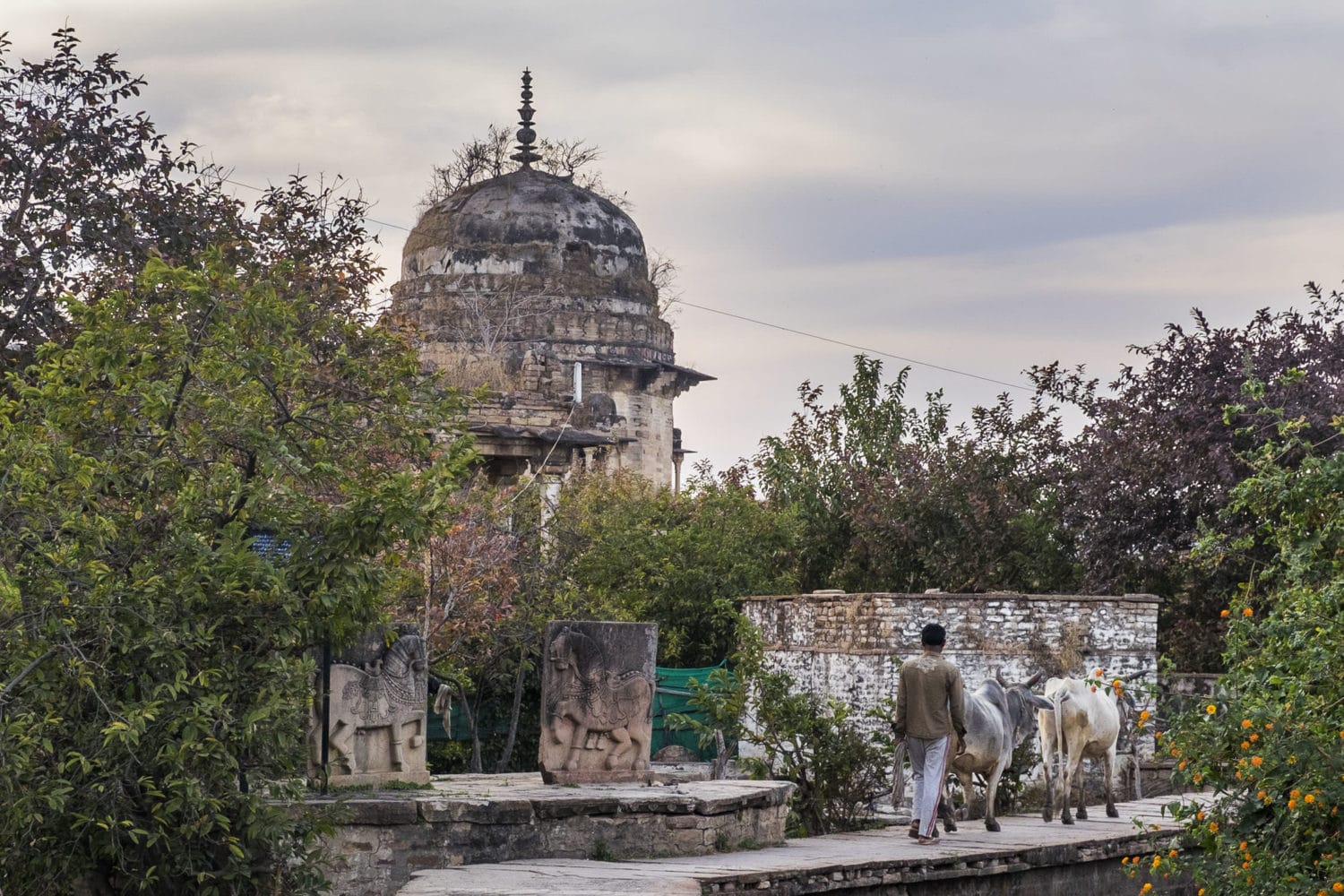
Towering above the city is the Chanderi fort, the site of many battles, which you can see from almost any angle. The fort was captured by Babur during his expansion into central India in 1528 AD and the city stayed in Mughal control till 1540 AD when Humayun lost it to Sher Shah Suri. The town and fort subsequently passed through several hands, including Malwa, Rajput, Bundela and finally the Scindia rulers. Today the fort sits serenely watching over the city, now under control of the ASI, some of its ramparts and main sections well maintained and intact. There is a memorial near the entrance that pays homage to the hundreds of royal women that committed jauhar or mass self-immolation to avoid being captured by Babur when the fort fell to his army. We wandered around the fort peering at the town below. With a few old carvings on doorways and entrances, and the impressive Khilji Mosque, one can imagine what the Mughal style fort might have looked like in its heyday. A selection of ‘before and after’ pictures in the main Nokhanda Palace details the restoration work done by the ASI, quite impressive and commendable. From the fort we could see the small lanes of the old city we had wandered through, the domes of the Jama Masjid and one of the many step wells that are strewn all over the landscape in the distance.
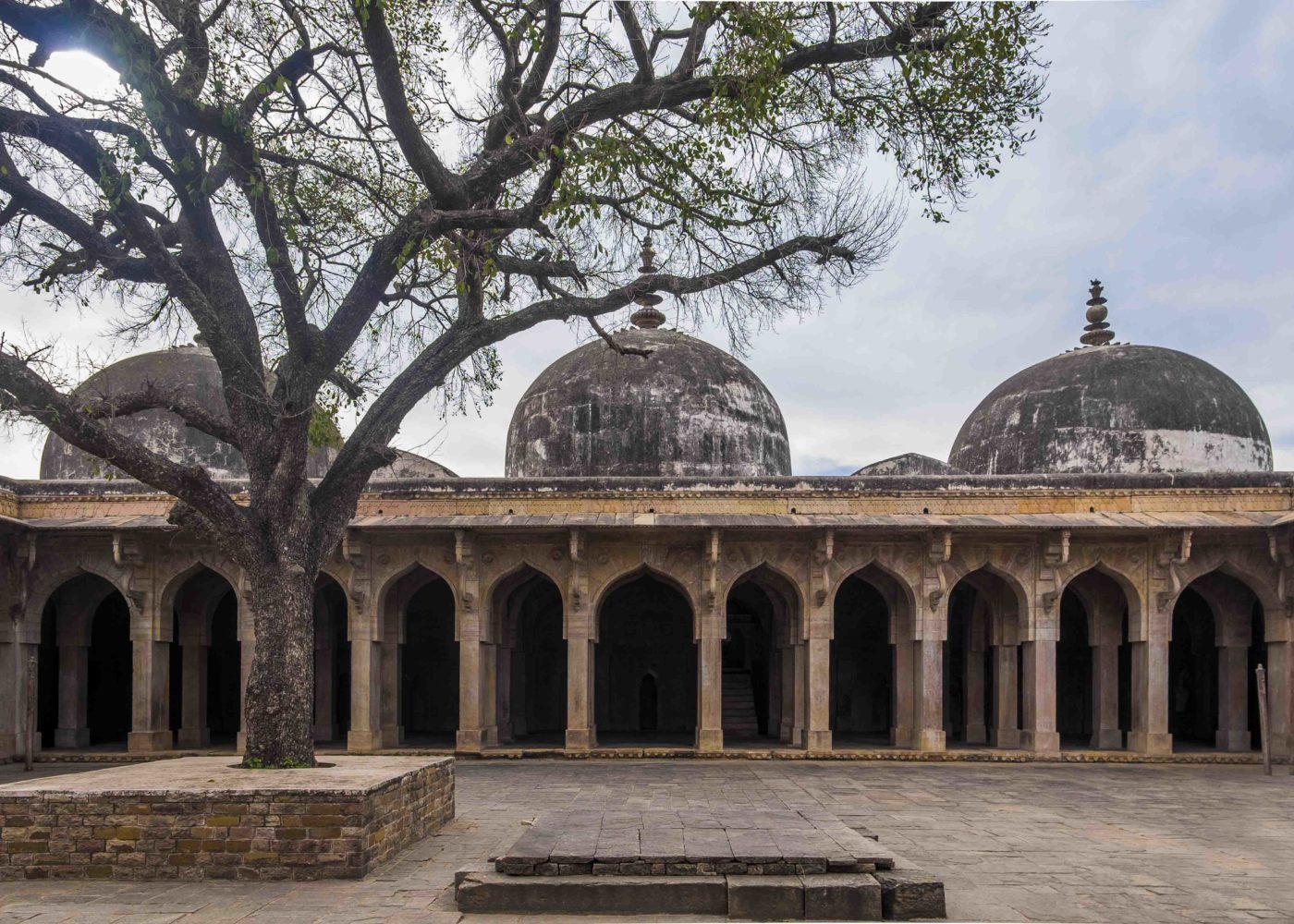
The Jama Masjid, dating back to the 15th Century, has been rebuilt and added to by various rulers. As with the fort walls, the carvings of the lotus flower and designs of pitchers shows the influence of Malwa architecture on the Islamic structures. The most impressive part of the Jama Masjid, and we’ve seen plenty, is the massive tree in the central courtyard that seemed to cover the entire space. We walked pass the Jama Masjid to the old step well we noticed from the fort. Back in the day there were apparently close to 1200 step wells in the greater Chanderi region, but we decided to skip most of them to explore the couple in the town area. The step well or bawdi, as they are called here, attracted us because of the two domes on one bank, rather unusual for a step well. The large deep square step well was quite full with the two old domes, similar to the ones on top of forts and palaces, standing over it. The domes were tombs we learnt on closer inspection, both a little different from the other, one with arches on all four sides, and made for an interesting sight.
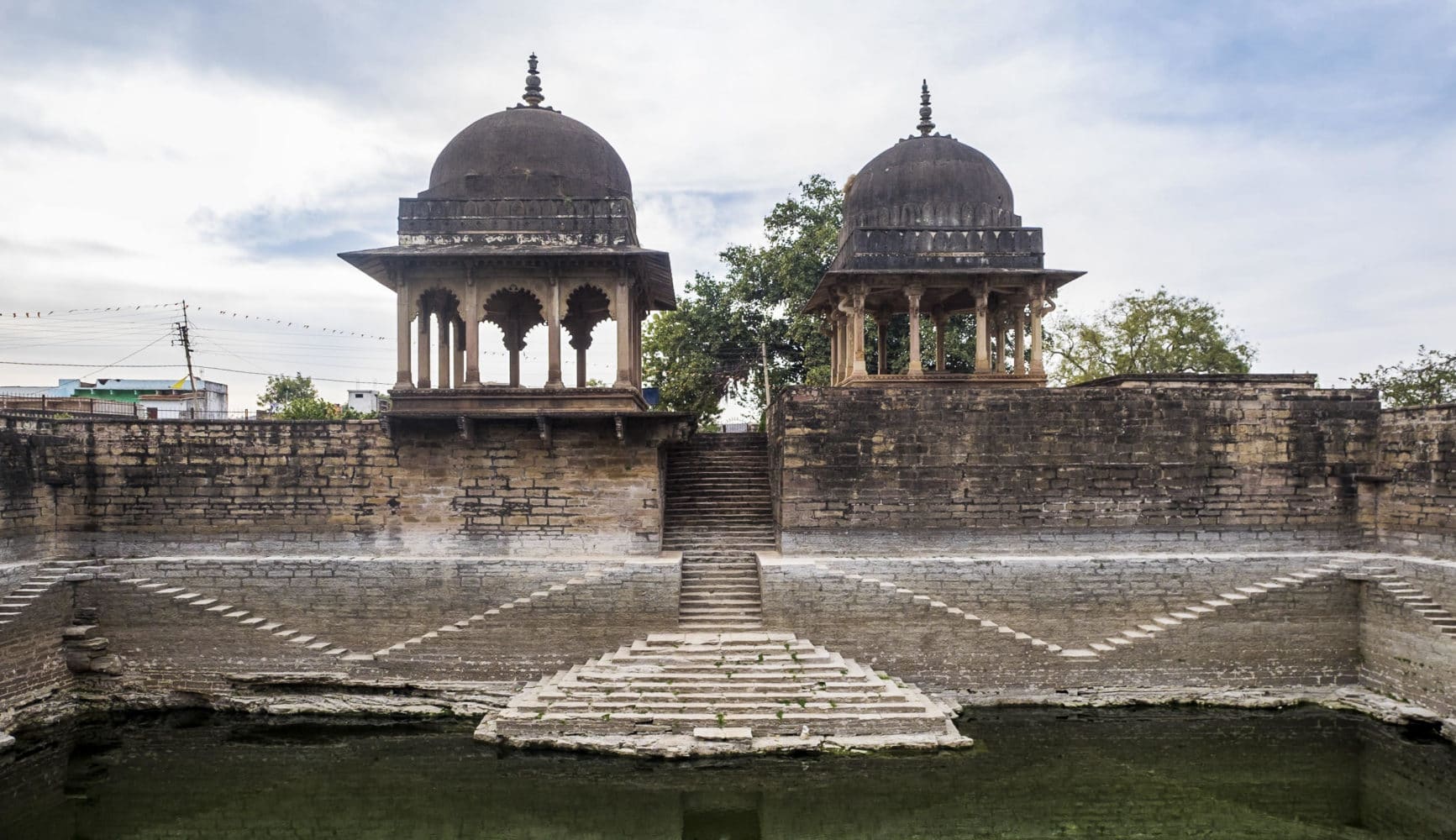
Having explored parts of Chanderi and some of the typical tourist spots, including a well laid out ASI Museum, we headed back into the old city for chai and some more wandering. While the Museum is full of old sculptures and that might not be your thing, we suggest a visit to check out the excellent collection of maps of the sub-continent that show the changing kingdoms over time, starting with 800BC. Any old town is full of legends and we sat down at a tea stall and chatted with people around. We learnt that no one has quite figured out when Chanderi was actually founded, due to the lack of written script, but that it features in everything from the Mahabharata to Al Beruni’s chronicles of India. One legend claims that the town was founded by Krishna’s cousin and another told us of how the city shifted to its present location in the 11th Century on the advice of a miracle worker. The story teller seemed rather unsure of why it shifted though and we haven’t found any accounts to support this story, but its a good one nonetheless, especially over chai and biscuits.
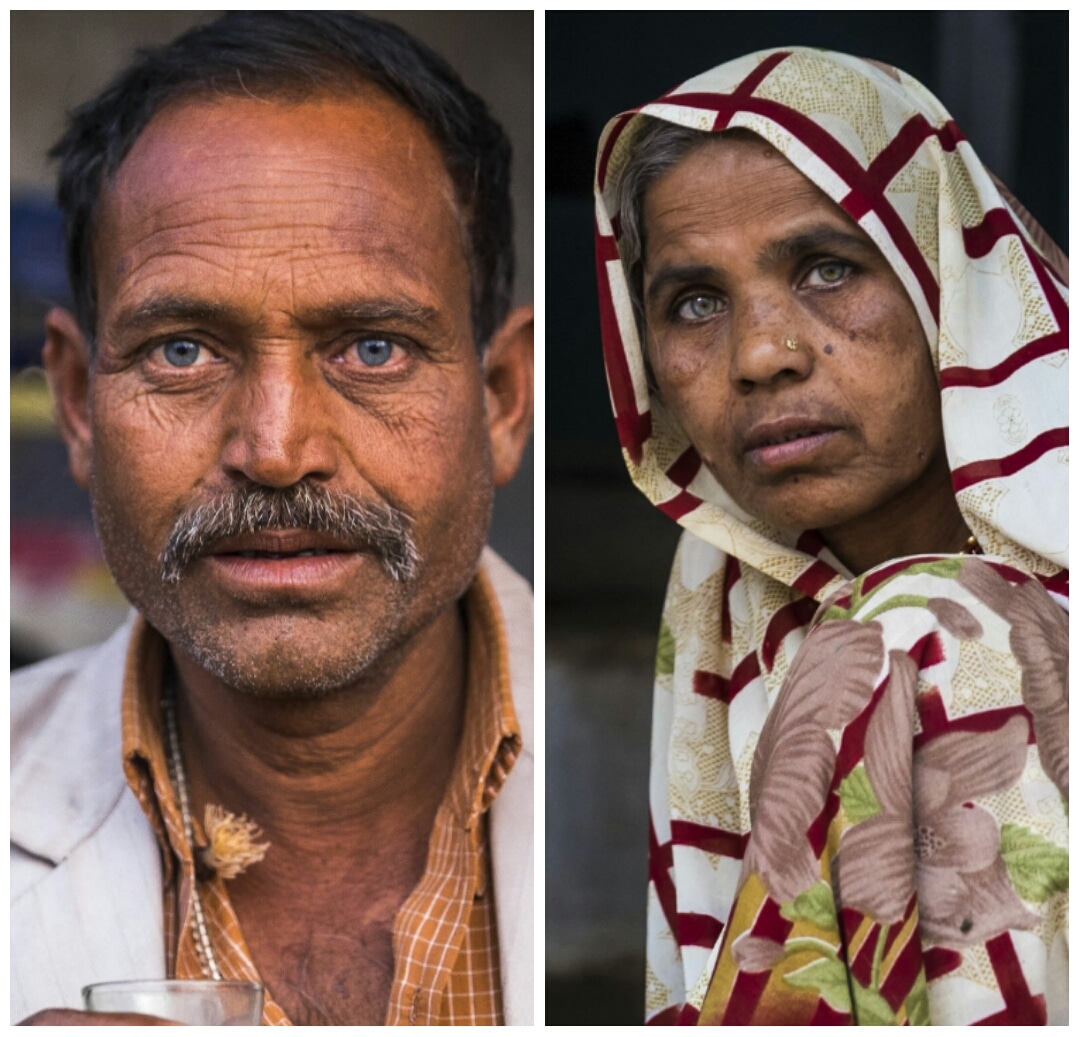
Fortified by chai and stories, we headed off in search of a weavers cooperative society we were told to check out, where we could observe the process of the making of the famous Chanderi sarees. The weavers cooperative is run by an NGO, Chanderiyaan, an e-Commerce portal to showcase the magic and beauty of Chanderi, as it says on their website. We are suckers for anyone engaged in good community development and preservation of old traditions, and thus headed to the NGO. We walked through the old town and reached the gate of Chanderiyaan, only to realise that the whole set up was housed in an old palace, the Raja Mahal, which we were also looking to see. Very fortuitous! It was a stunning place to work. We spent some time there, understanding the unique warp and weft method of the sari weave, where the silk is interspersed with cotton, a method apparently pioneered by the Chanderi weaves of old. The weaving has traditionally been done by Hindu men, and here interested and skilled boys from local villages, regardless of religion, are trained and given a loom. The NGO aims to bypass the master weavers and the unfair price margins set by them and showcase the creations of the weavers directly to the markets. Women are also now brought into the space, where they are creating the designs, as well as working in other areas. Inspiration is derived from working in the beautiful old seven storied Mahal, with a mix of architecture dating back to the Bundela and Khilji rulers. The little shop in one corner of the Mahal is full of the beautiful saris made right there, and obviously I couldn’t resist buying a couple. Through out the time we walked around the Mahal and were shown the wonderful work done by the NGO, we could hear the nonstop sounds of the loom, the unmistakable clang of wood again wood. The manager of the shop and the NGO, a chatty fellow, proudly told us about how the community has benefitted by their work, especially since they don’t discriminate on the basis of religion.
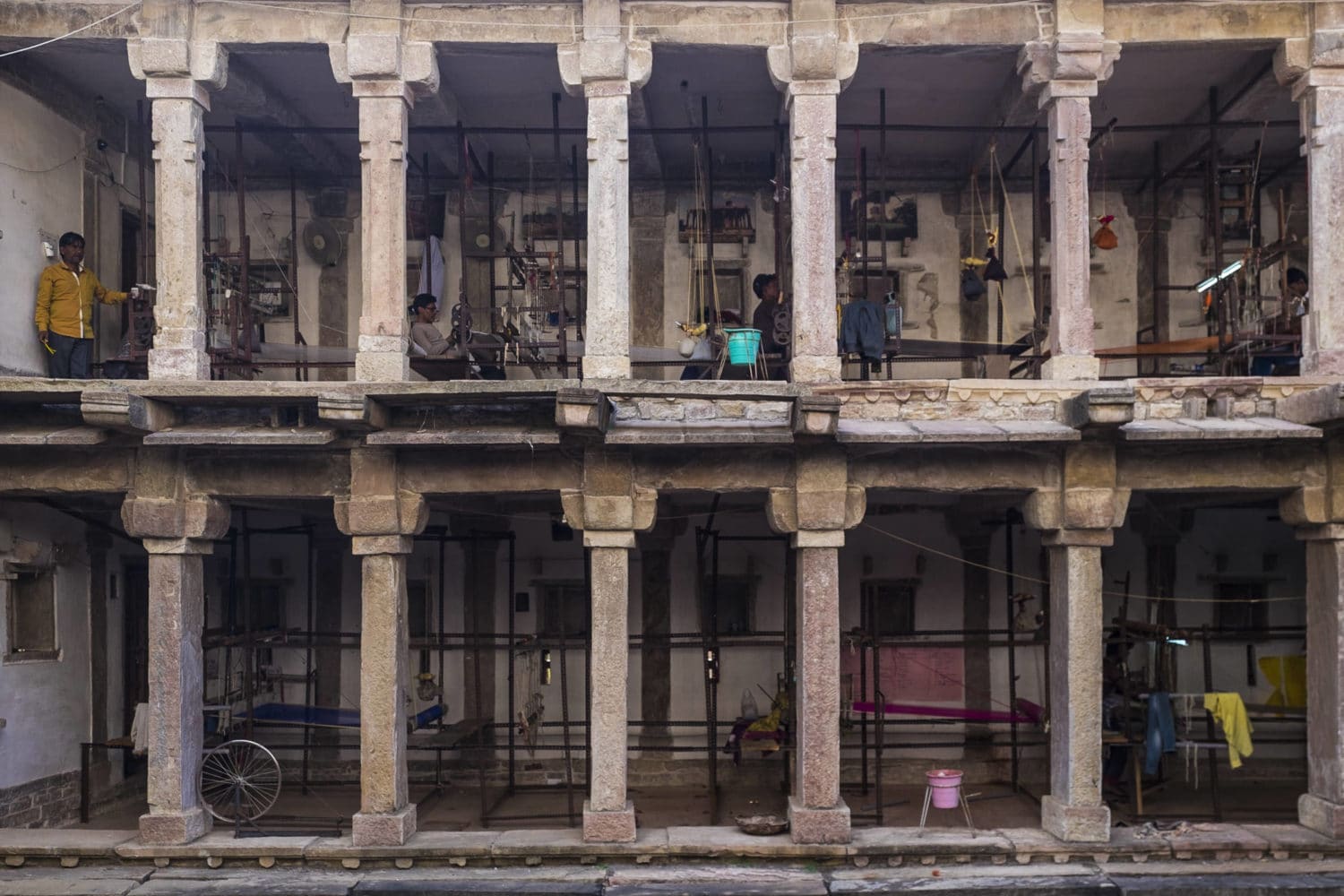
We spent over an hour at Chanderiyaan, exploring the Mahal and learning more about this interesting weave pattern and the stories of the weavers themselves. Each saree takes at least a week to make, and requires patience and dedication, and despite the hard work involved everyone seemed quite happy with what they were doing. ‘It’s nice to know that my work is appreciated in the big cities, especially at a fair price to them and a good price to me’, seemed to be the common theme echoed by the weavers. Happy with our time spent at the NGO and our purchase, we headed out of the old city of Chanderi, where hopefully the preservation of old tradition in the arts will bring back some of its former glory.
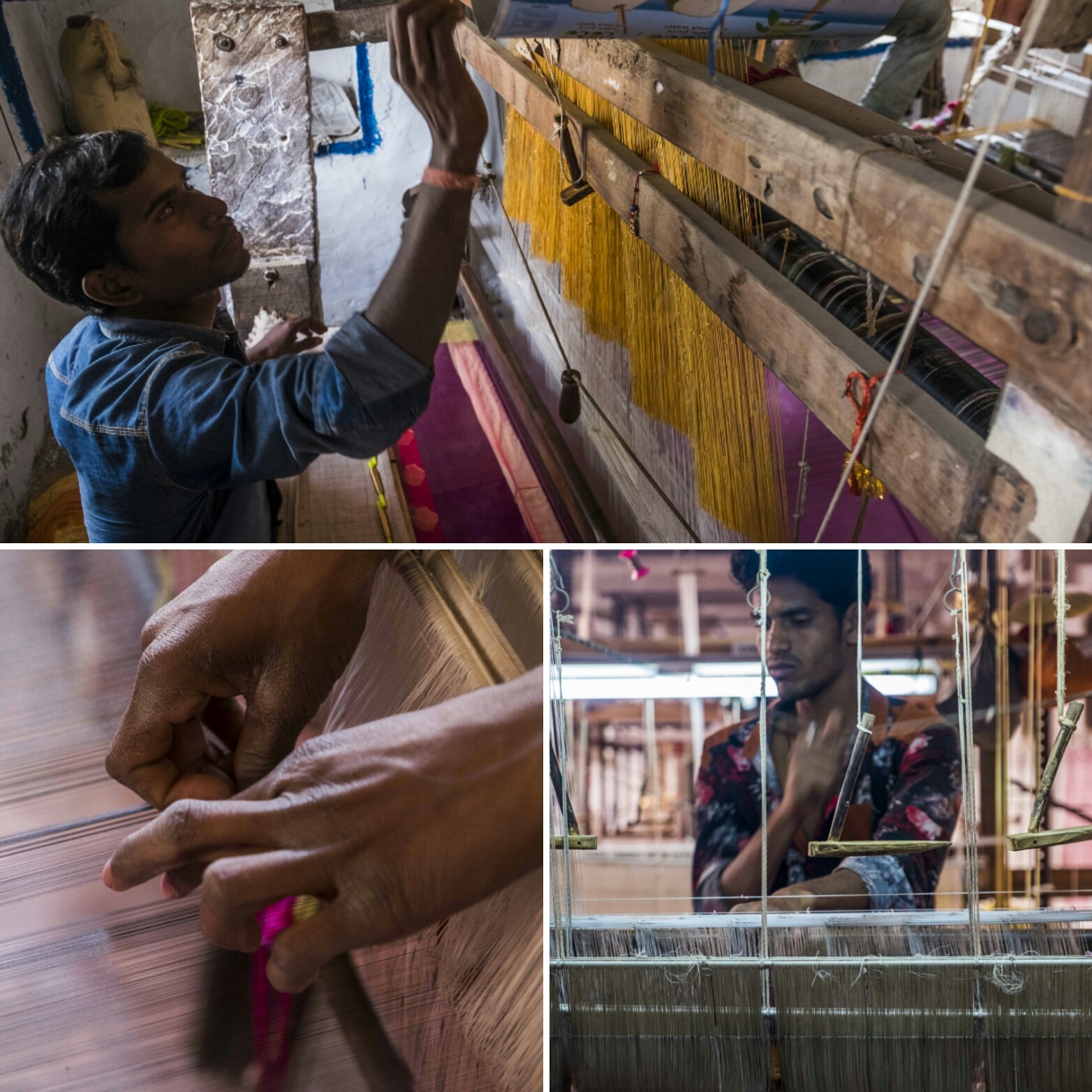
Some Useful Information:
How to get there: Chanderi is located around four to five hours away from Gwalior and Khajuraho and about four hours from Bhopal, the nearest major airport. The closest major rail head is Jhansi which is about 120 kms away though if you can get a train to Lalitpur it’s only 35 kms away.
Where to Stay: Chanderi is quite short of decent stay options and your best bet is probably Tana Bana, the MPTDC Resort, located next to the fort. If you are looking for something more interesting and don’t mind a short taxi ride, a good option is Amaree, a rural stay in the weavers village of Pranpur around 3 kms from Chanderi, where you can interact with the weavers and take in a bit of village life.
How much time to spend: This really depends on where your interest lies. If you are looking to pick up a couple of Saris and take in a few sights a day trip should suffice (though it does get tiring). However if you want to explore the town and all its bylanes full of crumbling monuments, history and architecture, we would recommend spending at least two nights. It will be well worth it.
Dont Miss: If you are looking to buy a Chanderi Saree we suggest a visit to Chanderiyaan in the old Raja-Rani Mahal, which is a much nicer experience as compared to buying a sari in a regular shop in the market.